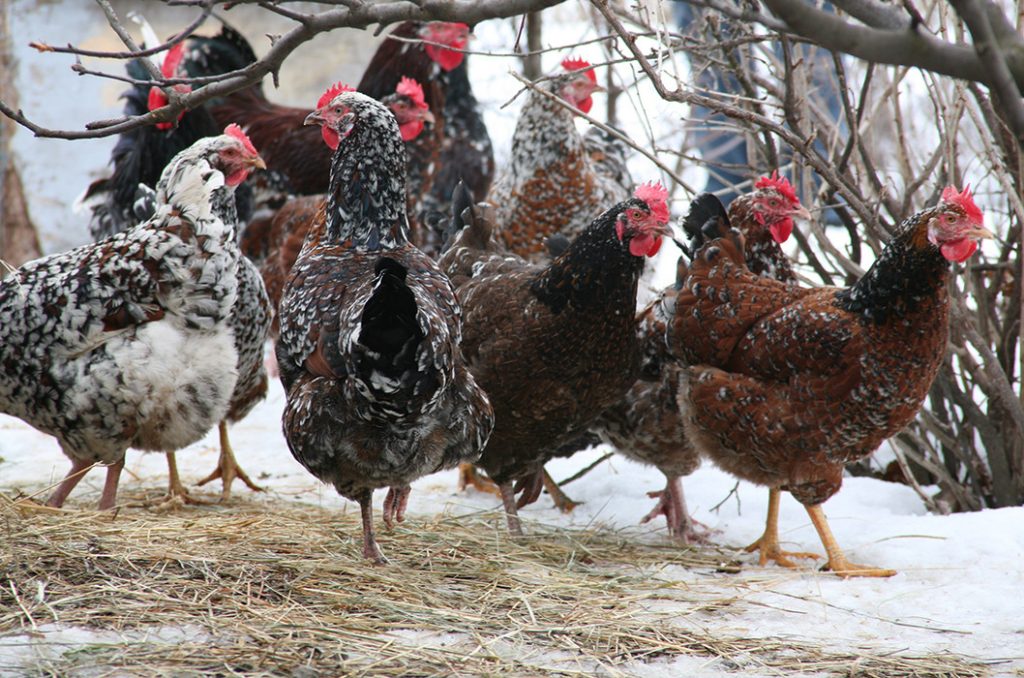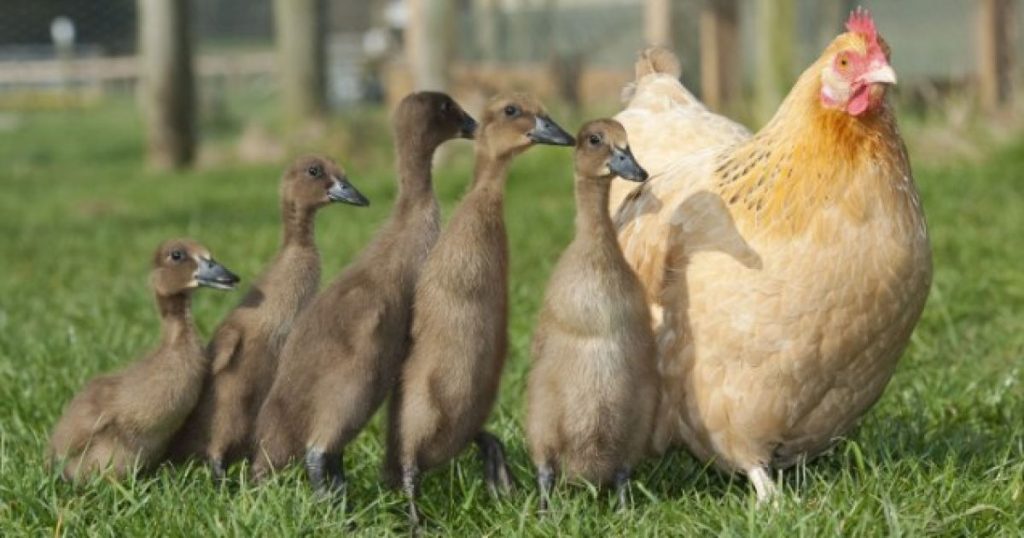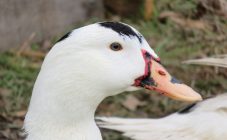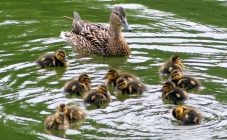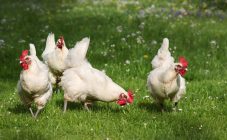Content:
Every year, poultry farming is gaining more and more popularity, thanks to the good productivity and profitability of this industry. This trend applies not only to large enterprises, but also to owners of households or small summer cottages.
Practically all poultry has proven itself well for growing and breeding: chickens, ducks, geese, turkeys, both egg-laying and broiler breeds. Chicken, goose and duck meat, as well as eggs and down are high-quality and demanded products. Bird keeping is not as complicated as it seems at first glance. Thanks to the development of breeders, a large number of new varieties of poultry, especially meat breeds, have appeared. They are characterized by fast and efficient growth, which makes the poultry industry quite profitable.
Often, in the presence of a small area for keeping livestock, the question arises: is it possible to keep chickens and ducks together or geese with other varieties of birds. To give an answer, you need to understand the peculiarities of growing each species.
Poultry care rules
Laying hens and broilers are the most common species of birds. They do not require special conditions, close maintenance. The main preconditions for effective growing are balanced feed, regular cleaning of the barn or cages. Chickens need dry bedding, no drafts, good clarification, and do not tolerate excess moisture. Broilers are also sensitive to temperature changes and diseases.
It is recommended to keep meat breeds in cages or in a small fenced area - they move little, eat well, which contributes to effective weight gain. The best option for chickens is the combined content in the chicken coop and on the walk.
The habitats of chickens should be provided with feeders, drinkers, nests.
Chickens are very unpretentious in food, but they prefer combined feed from grain crops, juicy feed, root crops.
Geese and ducks are waterfowl and need water. In this case, their content is possible in a closed and semi-closed way. Most breeds gain weight very well - in 2-3 months you can get a livestock weighing 4-5 kg.
To reduce the cost of food and better well-being of birds, it is recommended to combine keeping in a barn with the possibility of walking.
It should be borne in mind that ducks love to swim - this is how they clean their feathers, nasal passages. In the absence of natural reservoirs, tanks with water and gravel should be placed in the habitat - it is needed for better assimilation of food.
Unlike ducks, geese prefer to graze: they love meadows, large pastures. If it is possible to release birds into an open space, this can significantly reduce the cost of feeding and improve well-being.
Compatibility of different types of birds
Is it possible to keep geese, chickens and ducks together - this problem often arises among owners of a small farm.It is solved, depending on the territory allocated for the habitat of birds, their number and age. With proper organization of the space, geese, chickens and ducks can comfortably get along in a small area, in the same room.
It should be borne in mind that birds have their own hierarchy, at the highest step of which are geese. These birds are not only the largest among these types of poultry, but also the most warlike. Geese will always defend their territory, while injuring weaker individuals. Ducks, despite their considerable size, are harmless, very rarely get into a fight, keep in flocks, get along with any birds without problems. Chickens, although they are at the lowest level of the hierarchy, are quite aggressive and noisy.
In addition to behavior, there are also significant differences in the way of life of different species of birds. Chickens love cleanliness, do not tolerate high humidity. Ducks and geese, on the contrary, breed dampness, do not stand out for cleanliness.
To determine the possibility of combining bird species, you need to consider different combinations of content.
Can chickens and ducks be kept together?
Due to the calm and peaceful nature of the ducks, they get along quite well with chickens: both layers and broilers. One has only to divide the territory correctly. For feeding and bathing, chickens need dry bedding, but at the same time they scatter the contents of the feeders. Ducks in the process of feeding should all wash down with water, splashing it. The result is dirt and dampness.
For comfortable laying of eggs, nests can be arranged at different heights: for ducks - below, for chickens - a little higher, at the level of half a meter from the floor.
Can chickens and geese be kept together
This combination of birds is quite difficult, especially during the lapping period. Geese, in principle, are rather aggressive birds, they will always assert their superiority. Only a clear division of the territory, both in the poultry house and in the pasture, can save the situation. In the barn, you can build roosts for chickens or just surfaces on a hill where they could live, nest.
On a walk in the summer, the situation is no longer so difficult, especially if the territory is quite large. By properly dividing the feeding areas to prevent food fights, chickens and geese will find something to do.
Can geese and ducks be kept together?
Just like geese and ducks are waterfowl, they tolerate each other well. But some elements of lapping, of course, are present. This applies, first of all, to the drakes - they will determine the leader. But over time, the disputes will subside, and the birds will begin to get along well, share drinkers and feeders. This is very convenient in the sense that the diet of geese and ducks practically coincides - the birds feed well on various mash of grain, root crops, need the addition of bone meal, crushed eggshells, love juicy food, and geese also need hay.
Is it possible to keep goslings, chickens and ducklings together
The smallest problems arise when rearing chicks of different species together. A little gosling and a duckling practically do not differ from each other, as well as the basic principles of caring for them. They are equally fond of taking baths, grazing, the same diet and regime.
There is no particular trouble in the general raising of ducklings and chickens or goslings and chickens. The only problem is that you need to protect the chicken from moisture and dirt, which it cannot tolerate.
In infancy, all chicks get used to each other and are considered one chicken family. But there is one condition that must be fulfilled - the young should be kept separately until they grow up. In addition, feeding should be simultaneous and general, the diet of the chicks is the same.
Poultry tips
Experienced business executives recommend using nipple (closed) feeders and drinkers when keeping different species of birds together in a hen house. This will avoid excessive dilution of dirt and dampness.
For breeding offspring, the incubator method is preferred. In the case of incubation of eggs by layers, it will be additionally required to equip isolated places for them, to ensure peace of mind. In addition, after the hatching of the chicks of the mother, the goose, chicken, and ducks become very aggressive in an effort to protect the offspring. This leads to clutter and unnecessary noise.
Basic rules for joint content:
- Dividing the house into sectors. Geese and ducks will feel comfortable on the floor. Nests are built around the perimeter, drinkers, feeders, containers with gravel are installed in the center. It is better to place chickens on a hill, provide a dry, warm bedding with sawdust or straw, install drinkers, feeders, containers with ash and sand.
- It is also better to divide the pasture territory into sectors, equip each one for a different type of bird. In this case, it is easier to create comfortable conditions for the birds, feed them at a certain time and with the right food, and avoid conflicts.
- Provide lighting for the chickens. Chickens need light for high-quality egg production. Since excess lighting annoys waterfowl, you should think about the position of the light bulb correctly.
- Regular cleaning and disinfection. As a result of a large concentration of different birds, the risk of developing diseases or infection with helminths increases. To avoid this, you need to monitor the cleanliness of the chicken house and the pen, regularly clean, change the litter, disinfect the room, change the water. Vaccinations can be used to prevent major infections.
Keeping different bird species in one area is quite realistic. But in order for the process of growing birds not to develop into a booth, disorder and accumulation of dirt, this process should be treated responsibly. You need to make an effort, carefully consider the location of each type of bird, monitor the cleanliness of the room and in the pen. This will allow you to make optimal use of the allocated area and raise a large number of poultry.

